#brazilian economy
Explore tagged Tumblr posts
Text






#finance#brazil#finanças no brasil#finanças pessoais#brazillian finance#making money#money#dinheiro#fazer dinheiro#investimentos#investiments#brazillian investiments#brazilian investiments#investimentos no brasil#cenário brasil 2023#brasil 2023#cenário econômico brasil 2023#cenario economico brasil 2023#economia#brazilian economy#brazilian economics#linkeidn#andré araujo mentor em finanças pessoais#linkedin voices#linkedin teachers#linkedin communicator#linkedin impact#teacher's impact#changing lifes#life changing
0 notes
Text
Brazil: Land of the Future :: Stefan Zweig
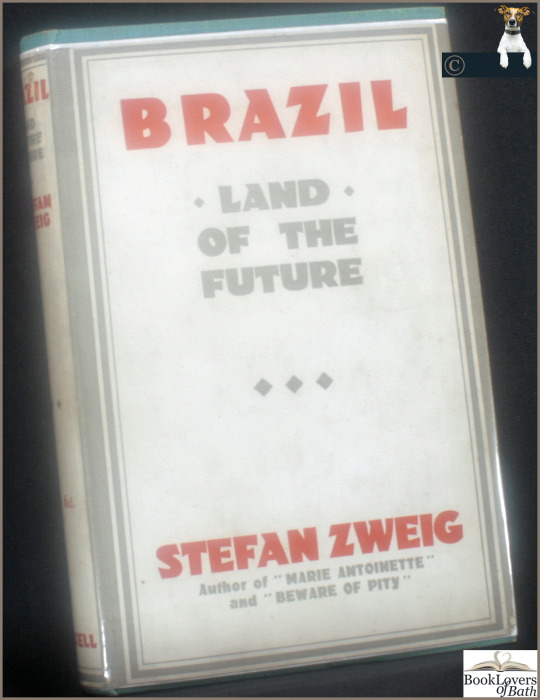
View On WordPress
#andrew st james#books by stefan zweig#brazilian civilization#brazilian culture#brazilian economy#brazilian gold towns#brazilian history#brazilian political history#brazilian politics#brazilians#buenos aires#campinas#culture brazil#historic brazil#history brazil#matto grosso#political unrest#rio de janeiro#rio sao francisco#sao paulo#south american history#south american republics
1 note
·
View note
Text
China emphasizes partnership with Brazil to overcome US trade war
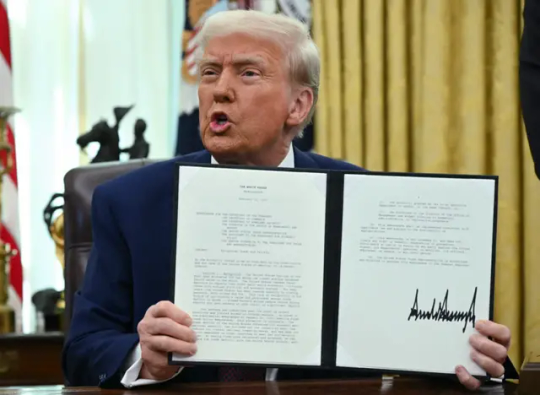
“China will work with Brazil to (…) exercise true multilateralism, guarantee the UN’s central role and defend the legitimate rights and interests of Global South countries,” said Chinese Foreign Ministry spokesman Guo Jiakun, when answering Brasil de Fato/TVT about whether talks had begun between Brazil and China or within BRICS to confront the wave of tariffs initiated by the Trump administration in the United States.
The new US government’s policy of tariffs has targeted both countries. In the case of China, 10% tariffs have been applied to imports of all Chinese products. Brazil is likely to be affected by 25% tariffs on all steel and aluminum the US imports. President Lula has said that he will react to Trump’s steel tax. Last Friday (14), Lula told Rádio Clube do Pará that Brazil would complain to the WTO or tax US products.
The Chinese foreign ministry spokesman also said that “China supports Brazil’s BRICS presidency and will jointly advance further BRICS cooperation”. He added that “as two major countries in the world and representative members of the Global South, China and Brazil have maintained our strategic determination and made active contributions to global peace, stability and development together in a volatile and turbulent world.”
Continue reading.
#brazil#brazilian politics#politics#united states#china#chinese politics#economy#geopolitics#image description in alt#mod nise da silveira
33 notes
·
View notes
Note
what is atalante's profile like in chaldea twitter adventures? same goes for mordred sumanai and achilles
Won’t be able to do the latter two atm but I can give you Atalante and Mordred!


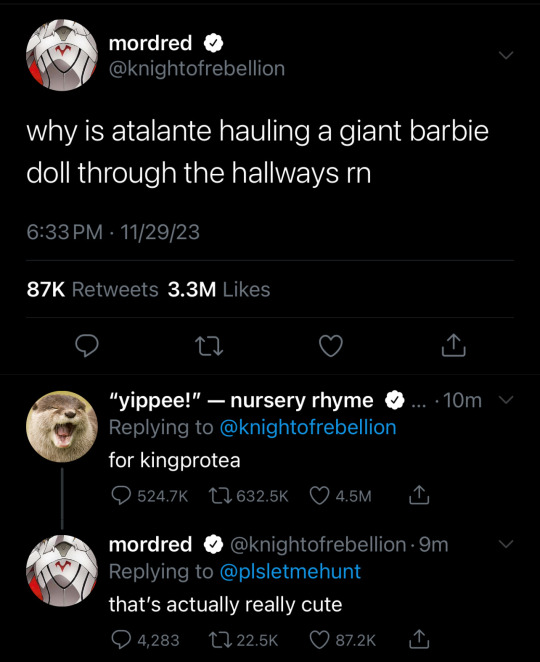


#the subsequent barbie boom would have devastating effects on the watchtower#mattel#the united states and brazilian economies#and gudako’s wallet#culminating in morgan ordering one of every barbie ever made for baobhan sith#only for gil to have his own custom made barbie (of his genderbent self) ordered#it’s a long story#fgo#fate grand order#chaldea twitter adventures#baobhan sith#gudako#castoria#atalante#mordred#mash kyrielight#gawain
130 notes
·
View notes
Text

no way
45 notes
·
View notes
Text
My first time at this grocery store
I go to the regular aisle and the cheapest tapioca flour is 4.19
I go to the Asian aisle for something different and I find another tapioca flour! It’s 1.99 😭
#idk why flour is so pricey 😭😭#like the Asian tapioca flour was on the bottom shelf where it was a no man’s land#not even part of the regular flour baking section#ty random dragonfly brand for saving me in this economy#sighs#I’m making Brazilian cheese bread#or rather#pão de queijo#this goes to my online friend beebs who helped me pronounce this forever ago lol#I miss them <3#bella rambles
12 notes
·
View notes
Text
On May 28, 1914, the Institut für Schiffs-und Tropenkrankheiten (Institute for Maritime and Tropical Diseases, ISTK) in Hamburg began operations in a complex of new brick buildings on the bank of the Elb. The buildings were designed by Fritz Schumacher, who had become the Head of Hamburg’s building department (Leiter des Hochbauamtes) in 1909 after a “flood of architectural projects” accumulated following the industrialization of the harbor in the 1880s and the “new housing and working conditions” that followed. The ISTK was one of these projects, connected to the port by its [...] mission: to research and heal tropical illnesses; [...] to support the Hamburg Port [...]; and to support endeavors of the German Empire overseas.
First established in 1900 by Bernhard Nocht, chief of the Port Medical Service, the ISTK originally operated out of an existing building, but by 1909, when the Hamburg Colonial Institute became its parent organization (and Schumacher was hired by the Hamburg Senate), the operations of the ISTK had outgrown [...]. [I]ts commission by the city was an opportunity for Schumacher to show how he could contribute to guiding the city’s economic and architectural growth in tandem, and for Nocht, an opportunity to establish an unprecedented spatial paradigm for the field of Tropical Medicine that anchored the new frontier of science in the German Empire. [...]
[There was a] shared drive to contribute to the [...] wealth of Hamburg within the context of its expanding global network [...]. [E]ach discipline [...] architecture and medicine were participating in a shared [...] discursive operation. [...]
---
The brick used on the ISTK façades was key to Schumacher’s larger Städtebau plan for Hamburg, which envisioned the city as a vehicle for a “harmonious” synthesis between aesthetics and economy. [...] For Schumacher, brick [was significantly preferable] [...]. Used by [...] Hamburg architects [over the past few decades], who acquired their penchant for neo-gothic brickwork at the Hanover school, brick had both a historical presence and aesthetic pedigree in Hamburg [...]. [T]his material had already been used in Die Speicherstadt, a warehouse district in Hamburg where unequal social conditions had only grown more exacerbated [...]. Die Speicherstadt was constructed in three phases [beginning] in 1883 [...]. By serving the port, the warehouses facilitated the expansion and security of Hamburg’s wealth. [...] Yet the collective profits accrued to the city by these buildings [...] did not increase economic prosperity and social equity for all. [...] [A] residential area for harbor workers was demolished to make way for the warehouses. After the contract for the port expansion was negotiated in 1881, over 20,000 people were pushed out of their homes and into adjacent areas of the city, which soon became overcrowded [...]. In turn, these [...] areas of the city [...] were the worst hit by the Hamburg cholera epidemic of 1892, the most devastating in Europe that year. The 1892 cholera epidemic [...] articulated the growing inability of the Hamburg Senate, comprising the city’s elite, to manage class relationships [...] [in such] a city that was explicitly run by and for the merchant class [...].
In Hamburg, the response to such an ugly disease of the masses was the enforcement of quarantine methods that pushed the working class into the suburbs, isolated immigrants on an island, and separated the sick according to racial identity.
In partnership with the German Empire, Hamburg established new hygiene institutions in the city, including the Port Medical Service (a progenitor of the ISTK). [...] [T]he discourse of [creating the school for tropical medicine] centered around city building and nation building, brick by brick, mark by mark.
---
Just as the exterior condition of the building was, for Schumacher, part of a much larger plan for the city, the program of the building and its interior were part of the German Empire and Tropical Medicine’s much larger interest in controlling the health and wealth of its nation and colonies. [...]
Yet the establishment of the ISTK marked a critical shift in medical thinking [...]. And while the ISTK was not the only institution in Europe to form around the conception and perceived threat of tropical diseases, it was the first to build a facility specifically to support their “exploration and combat” in lockstep, as Nocht described it.
The field of Tropical Medicine had been established in Germany by the very same journal Nocht published his overview of the ISTK. The Archiv für Schiffs- und Tropen-Hygiene unter besonderer Berücksichtigung der Pathologie und Therapie was first published in 1897, the same year that the German Empire claimed Kiaochow (northeast China) and about two years after it claimed Southwest Africa (Namibia), Cameroon, Togo, East Africa (Tanzania, Burundi, Rwanda), New Guinea (today the northern part of Papua New Guinea), and the Marshall Islands; two years later, it would also claim the Caroline Islands, Palau, Mariana Islands (today Micronesia), and Samoa (today Western Samoa).
---
The inaugural journal [...] marked a paradigm shift [...]. In his opening letter, the editor stated that the aim of Tropical Medicine is to “provide the white race with a home in the tropics.” [...]
As part of the institute’s agenda to support the expansion of the Empire through teaching and development [...], members of the ISTK contributed to the Deutsches Kolonial Lexikon, a three-volume series completed in 1914 (in the same year as the new ISTK buildings) and published in 1920. The three volumes contained maps of the colonies coded to show the areas that were considered “healthy” for Europeans, along with recommended building guidelines for hospitals in the tropics. [...] "Natives" were given separate facilities [...]. The hospital at the ISTK was similarly divided according to identity. An essentializing belief in “intrinsic factors” determined by skin color, constitutive to Tropical Medicine, materialized in the building’s circulation. Potential patients were assessed in the main building to determine their next destination in the hospital. A room labeled “Farbige” (colored) - visible in both Nocht and Schumacher’s publications - shows that the hospital segregated people of color from whites. [...]
---
Despite belonging to two different disciplines [medicine and architecture], both Nocht and Schumacher’s publications articulate an understanding of health [...] that is linked to concepts of identity separating white upper-class German Europeans from others. [In] Hamburg [...] recent growth of the shipping industry and overt engagement of the German Empire in colonialism brought even more distant global connections to its port. For Schumacher, Hamburg’s presence in a global network meant it needed to strengthen its local identity and economy [by purposefully seeking to showcase "traditional" northern German neo-gothic brickwork while elevating local brick industry] lest it grow too far from its roots. In the case of Tropical Medicine at the ISTK, the “tropics” seemed to act as a foil for the European identity - a constructed category through which the European identity could redescribe itself by exclusion [...].
What it meant to be sick or healthy was taken up by both medicine and architecture - [...] neither in a vacuum.
---
All text above by: Carrie Bly. "Mediums of Medicine: The Institute for Maritime and Tropical Diseases in Hamburg". Sick Architecture series published by e-flux Architecture. November 2020. [Bold emphasis and some paragraph breaks/contractions added by me. Text within brackets added by me for clarity. Presented here for commentary, teaching, criticism purposes.]
#abolition#ecology#sorry i know its long ive been looking at this in my drafts for a long long time trying to condense#but its such a rich comparison that i didnt wanna lessen the impact of blys work here#bly in 2022 did dissertation defense in architecture history and theory on political economy of steel in US in 20s and 30#add this to our conversations about brazilian eugenics in 1930s explicitly conflating hygiene modernist architecture and white supremacy#and british tropical medicine establishment in colonial india#and US sanitation and antimosquito campaigns in 1910s panama using jim crow laws and segregation and forcibly testing local women#see chakrabartis work on tropical medicine and empire in south asia and fahim amirs cloudy swords#and greg mitmans work on connections between#US tropical medicine schools and fruit plantations in central america and US military occupation of philippines and rubber in west africa#multispecies#imperial#indigenous#colonial#landscape#temporal#see also us mosquito campaigns in panama and british urban planning in west africa and rohan deb roy work on india bengal entomology#ecologies#bugs#tidalectics#archipelagic thinking#plantations#intimacies of four continents#carceral geography#black methodologies#indigenous pedagogies
14 notes
·
View notes
Text
Brazil to supply Russian nuclear power plants with uranium
Brazil has the eighth largest uranium reserve in the world and technology for enrichment for peaceful purposes

Indústrias Nucleares do Brasil (INB) has signed a contract with Internexco GmbH, a subsidiary of Russia’s state-owned Rosatom, for the export of up to 275,000 kilograms of uranium concentrate (U3O8) produced in Caetité, Bahia. The material will undergo conversion and enrichment abroad before being reimported to Brazil by December 2027 as enriched UF6 (4.25%), which will be used to produce fuel for the Angra 1 and 2 nuclear power plants, operated by Eletronuclear.
According to INB President Adauto Seixas, logistical planning for the shipment is already underway. This includes organizing domestic transportation in Brazil, contracting international maritime shipping from Salvador to Russia, and obtaining the necessary export licenses.
“The INB plans to increase the frequency of these contracts through future international bidding processes, following the successful resumption of uranium production in Caetité,” Mr. Seixas said.
Conversion is the only stage of the nuclear fuel cycle that INB does not handle. This process transforms “yellowcake” into uranium hexafluoride (UF6)—a compound that transitions into a gaseous state at low temperatures, a necessary step for uranium enrichment.
Continue reading.
#brazil#brazilian politics#politics#economy#russia#geopolitics#image description in alt#mod nise da silveira
21 notes
·
View notes
Text
‘Morally, nobody’s against it’: Brazil’s radical plan to tax global super-rich to tackle climate crisis
A 2% levy would affect about 100 billionaire families, says the country’s climate chief, but the $250bn raised could be transformative

Proposals to slap a wealth tax on the world’s super-rich could yield $250bn (£200bn) a year to tackle the climate crisis and address poverty and inequality, but would affect only a small number of billionaire families, Brazil’s climate chief has said.
Ministers from the G20 group of the world’s biggest developed and emerging economies are meeting in Rio de Janeiro this weekend, where Brazil’s proposal for a 2% wealth tax on those with assets worth more than $1bn is near the top of the agenda.
No government was speaking out against the tax, said Ana Toni, who is national secretary for climate change in the government of President Luiz Inácio Lula da Silva.
“Our feeling is that, morally, nobody’s against,” she told the Observer in an interview. “But the level of support from some countries is bigger than others.”
However, the lack of overt opposition does not mean the tax proposal is likely to be approved. Many governments are privately sceptical but unwilling to publicly criticise a plan that would shave a tiny amount from the rapidly accumulating wealth of the planet’s richest few, and raise money to address the pressing global climate emergency.
Janet Yellen, the US Treasury secretary, told journalists in Rio that the US “did not see the need” for a global initiative.
Continue reading.
#brazil#politics#environmentalism#economy#climate change#environmental justice#brazilian politics#foreign policy#international politics#image description in alt#mod nise da silveira
55 notes
·
View notes
Text
Brazil Records the Lowest Rates of Extreme Poverty and Poverty Since the Beginning of the Historical Series
Portions of the population in these conditions fall below 30% and 5% for the first time

Poverty and extreme poverty in Brazil decreased in 2023 for the second consecutive year, reaching the lowest levels since the historical series began in 2012, according to data released this Wednesday (4) by the Brazilian Institute of Geography and Statistics (IBGE).
According to the agency, the results are linked to the strengthening of the labor market and the payment of social benefits like Bolsa Família.
From 2022 to 2023, the proportion of people considered poor decreased from 31.6% to 27.4%. This is the first time that the percentage has fallen below 30% in the series. Until then, the lowest point was recorded in 2014 (30.8%).
In absolute terms, the number of poor people fell from 67.7 million in 2022 to 59 million in 2023. This year's number is also the lowest in the series.
Continue reading.
42 notes
·
View notes
Text
Trump may try to push Brazil away from China and boost the far-right in the region, says analyst
Professor Barbara Motta says Brazilian diplomacy may seek normalization in its relations with the US
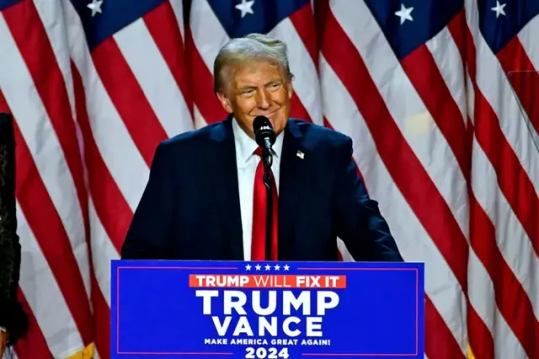
Although Brazil is not currently a priority country for US foreign relations, the effects of Donald Trump's electoral victory, confirmed on Wednesday (6), may be felt in the foreign policy of Luiz Inácio Lula da Silva's government. That’s the analysis of Barbara Motta, professor of International Relations at the Federal University of Sergipe (UFS, in Portuguese) and coordinator of the Foreign Policy Observatory for Brazil (OPEB, in Portuguese).
“At first, the main consequence is how Brazil will manage to take a stance amid the trade war between China and the United States. For Brazil, it is important to maintain good commercial and diplomatic ties with both the United States and China, since both countries are important economic partners,” she told Brasil de Fato.
She believes that Trump will resume the policy he used in his first term, applying trade tariffs on Chinese products and pressuring allies to do the same. In a new round of Trump at the White House, Motta points out that this may be political pressure from the US on the Brazilian government.
“The United States sees Latin America as its exclusive area of influence, and Brazil is one of the major countries in the region. This could be pressure from the Trump administration on Brazil to distance the country and the regional bloc from a close commercial and diplomatic relationship with China.”
Continue reading.
#brazil#politics#us politics#china#united states#donald trump#brazilian politics#international politics#economy#image description in alt#mod nise da silveira
32 notes
·
View notes
Text
Lula imposes 15% tax on multinationals in Brazil
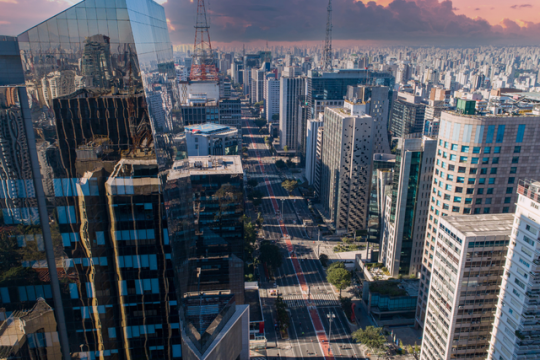
President Luiz Inácio Lula da Silva issued a provisional decree Thursday night imposing a 15 percent minimum tax on the profits of large multinational corporations operating in Brazil. The decree takes immediate effect, but must be approved by Congress within 120 days or it will expire.
According to a statement from Brazil’s Finance Ministry, the new tax will apply to about 290 multinational groups with annual revenues exceeding EUR 750 million (USD 822 million). Of these companies, around 20 are Brazilian.
Under the rule, if a multinational company pays less than 15 percent in taxes on its profits, it will be required to make up the difference — either in Brazil or in another jurisdiction.
The ministry projects that this measure will generate an additional BRL 3.4 billion (USD 620 million) in revenue by 2026, and BRL 7.3 billion by 2027.
Continue reading.
#brazil#brazilian politics#politics#economy#taxation#luiz inacio lula da silva#image description in alt#mod nise da silveira
38 notes
·
View notes
Text
How social programs and employment drove a decline in poverty in Brazil

In 2023, Brazil reached a historic milestone in its fight against poverty, reducing the rates of poverty and extreme poverty to the lowest levels since 2012, when the Brazilian Institute of Geography and Statistics (IBGE) began conducting annual surveys on the subject.
Data released by the IBGE last week revealed a significant improvement: from 2022 to 2023, the percentage of Brazilians living below the World Bank’s poverty line – defined as a monthly per capita household income under USD $110 – fell from 31.6% to 27.4%.
This marks the lowest rate ever recorded. In absolute terms, the number of people living in poverty declined from 67.7 million to 59 million, meaning 8.7 million individuals rose above the poverty line in just one year.
Similarly, the proportion of people living in extreme poverty – earning less than USD $35 per month – dropped from 5.9% to 4.4%. This is the lowest level since 2012, and the first time the rate has fallen below 5%. In numerical terms, this represents 3.1 million fewer people in extreme poverty: from 12.6 million in 2022 to 9.5 million in 2023.
Continue reading.
30 notes
·
View notes
Text
Brazil rolls out minimum tax on profits of multinational firms
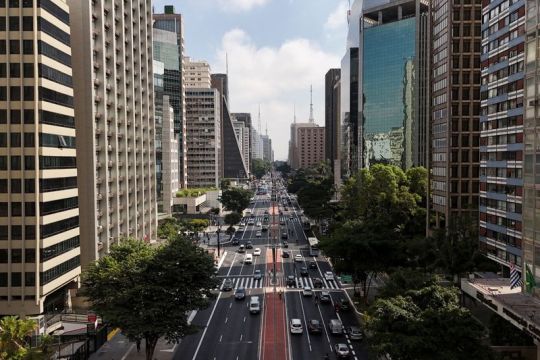
Brazil's government late on Thursday published an executive order that effectively rolls out a minimum 15% tax on profits of multinational corporations, a publication in the country's official gazette showed.
Brazil's government has been seeking new sources of revenue to meet fiscal targets that include reducing its fiscal deficit to zero, while being loath to adopt broad spending cuts. It says the new move is in line with global efforts to combat tax evasion.
The executive order sets an additional levy on Brazil's social contribution tax on corporate income (CSLL) to make sure the minimum taxation stands at 15%, according to the publication.
Continue reading.
31 notes
·
View notes
Text
Submerged by flooding, Porto Alegre realizes it was unprepared: 'Everything has to be rebuilt'
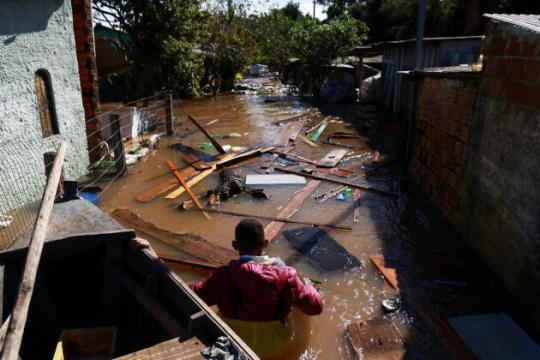
Three weeks after being hit by one of the worst climate disasters in its history, which left at least 157 people dead, 88 missing and forced the evacuation of 540,000, the Brazilian state of Rio Grande do Sul is still partly submerged.
After slipping on her rubber boots, Darcilla Melo Da Silva, 58, took a deep breath before she stepped through the metal gates of her house, guided by her husband, Admar, 68. The scene she had so feared to see for the past 12 days appeared before her eyes. The vegetable garden where she had planted cabbage and herbs to alleviate her severe health problems was buried under a layer of mud. The remains of a white hen lay among the tangled planks, next to her new washing machine, which had been swept into the garden by the current and had ended up crushed under a tree trunk.
The interior of her house, which took her 40 years to furnish, was even more desolate. A smell of rot was pervasive. Without any electricity, Da Silva had to discover the extent of the damage by the light from her husband's smartphone: holes in the roof, raised floor, overturned armchairs... "Everything has to be rebuilt," said the grandmother barely able to breathe.
The retired couple, who lived in the Cidade Baixa district in the west of Porto Alegre, were among the 540,188 people who were forced to evacuate their homes in early May when floodwaters engulfed two-thirds of the towns in the state of Rio Grande do Sul, a hilly area on the border with Argentina and Uruguay with a population of some 11 million.
Since April 27, torrential rains have battered the region, raising the level of the Guaiba, a body of water – considered as much a river, lake or estuary – that borders the Porto Alegre metropolitan area, by several meters. On May 6, the day Darcilla Melo Da Silva and Admar evacuated their home, the water level reached 5.3 meters: the most severe flooding since 1941, when the Guaiba had risen to a height of 4.76 meters.
"This extreme event is the result of global warming" aggravated by the El Niño phenomenon, said Francisco Aquino, climatologist and head of the geography department at the Federal University of Rio Grande do Sul. As temperatures rise, "we expect them to become more frequent and intense."
Continue reading.
#brazil#brazilian politics#politics#environmental justice#rio grande do sul floods 2024#mod nise da silveira#economy#image description in alt
61 notes
·
View notes
Text
Women manage R$82bn of the budget in five Brazilian capitals
Minority among finance department heads, women stand out for years of dedication to public service

Between the ages of 46 and 70, with diverse educational backgrounds and career paths, the five women currently leading the finance departments of Brazil’s capital cities are responsible for managing a combined municipal budget of R$82.6 billion and overseeing a team of 2,500 employees. Four were reappointed by the mayors inaugurated this year, having served in the same role in at least part of previous administrations. Although women are still a minority among the 26 finance secretaries in the capital cities, they point out that women now find more opportunities. Nonetheless, some have faced scrutiny regarding their performance or the challenges of pausing their careers to raise their children.
Their stories reveal that occupying roles in public finance did not arise from a wave of policies aimed at increasing female representation. They reached leadership positions by demonstrating readiness after decades of experience, often within predominantly male environments.
In common, all five secretaries joined the public sector well before taking their current leadership roles, succeeding in competitive public hiring tests at various levels of government—municipal, state, or federal. Throughout their careers, they navigated political shifts and the impacts of economic cycles on finance and public policy.
“The fact that women are occupying more space in public finance is rather related to the professionalization of the field than to inclusion and diversity,” said Giovanna Victer, 49, who is serving as municipal finance secretary for the fourth time, the second consecutive term in Salvador (Bahia), after two stints in the same role in Niterói (Rio de Janeiro). “I was invited to Salvador based on the results I achieved in Niterói. And before being invited to these roles, I did not know the mayors of either Niterói or Salvador.”
Continue reading.
14 notes
·
View notes